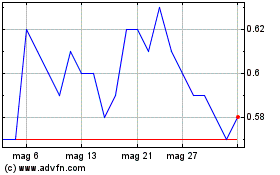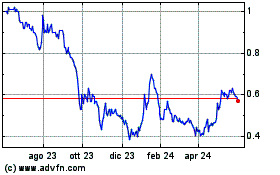HPQ Silicon Inc. (“HPQ” or the “Company”) (TSX-V: HPQ,
OTCQB: HPQFF, FRA: O08), a technology company
specializing in the green engineering of silica and silicon-based
materials is pleased to share new data from recent updated process
modelization work. This work was accomplished by technology
supplier PyroGenesis Canada Inc. (TSX: PYR, OTCQX: PYRGF,
FRA: 8PY) (“PyroGenesis”) during the ongoing commissioning of
HPQ Silica Polvere Inc. (“HSPI”) [1] Fumed Silica Reactor (“FSR”)
pilot plant.
The new data highlights the commercial and
environmental impact advantages of the HSPI Fumed Silica project
compared to conventional industry processes.
Reducing Energy Use and Carbon Footprint in Fumed Silica
Production
Since the project's inception in July 2021, our working models
have consistently been based on the estimate that producing 1 kg of
fumed silica at commercial scale using the FSR would require
between 10 and 15 kWh [2] of energy experimentally compared to 4-5
kWh theoretically based on the thermal model developed by
PyroGenesis. This assumption has been the foundation of our
internal technical and economic study, published on January
10th, 2024, which demonstrated the strong commercial potential of
the FSR, as well as the update released on June 5th, 2024.
As part of the current commissioning work, data collected from
updates to the thermal model now indicate that the energy required
to produce 1 kg of fumed silica at commercial scale of at least
1,000 TPY has been reduced to a range of 8 to 12 kWh [3]. This
represents an additional 20% reduction in the energy requirements
for the FSR project which is due to an optimized thermal efficiency
of the process.
The updated model indicates that HSPI FSR technology requires
92% less energy when compared to conventional processes, which
typically consume between 100 and 120 kWh per kg of fumed silica
produced [4].
The additional 20% reduction in energy requirements
significantly enhances the environmental benefits of the FSR
project. Since energy consumption and its associated greenhouse gas
(GHG) emissions account for approximately 99% of the carbon
footprint of FSR technology, this reduction is crucial. When
factoring in the updated model data and considering that energy
production in Quebec generates 1.7 grams of CO2 equivalent per kWh,
the HPSI FSR technology should now emit only 0.0136 kg of CO2 per
kg of fumed silica produced [5].
This represents a potential reduction of up to 99.9% in the
carbon footprint compared to conventional fumed silica production
processes, which typically produce between 8 to 17 kg of CO2 per kg
of fumed silica produced. [4]
“In mature industries like fumed silica production, improvements
are typically incremental and modest in scale,” said Bernard
Tourillon, President & CEO of HPQ Silicon and HPQ Silicon
Polvere. “However, with the introduction of our FSR technology, we
are poised to disrupt the market by enhancing efficiency and
reducing costs, potentially altering the competitive landscape for
fumed silica manufacturing.”
Understanding the significant
CO2 Reduction Potential of HSPI
FSR in Key Markets
With an annual consumption of approximately 24,000 tonnes of
fumed silica in Canada [6], adopting the HSPI FSR process could
result in significant reduction in CO2 emissions of
approximately 191,500 to 379,000 tonnes per year [7]. Similarly, in
European countries, where 92,000 tonnes are consumed
yearly [6], this process could cut emissions by approximately
734,000 to 1,453,600 tonnes annually [8].
This is equivalent to removing between approximately 45,477 to
345,817 cars from the road annually [9].
Updated Table Highlighting HSPI Disruptive
Advantages
“The transformative potential of our FSR technology, with its
ability to dramatically reduce energy consumption and emissions, is
strong,” added Mr. Tourillon. “However, we believe that its impact
will be more truly recognized once the pilot plant starts producing
fumed silica materials, setting a new standard for sustainability
in the industry.”
REFERENCE SOURCES
|
[1] |
A wholly owned
subsidiary of HPQ Silicon Inc. when technology supplier PyroGenesis
announced its intention to exercise its option to acquire a 50%
stake in HSPI in May 2024. |
| [2] |
Preliminary energy consumption estimate made by PyroGenesis
Canada Inc. (January 2024) |
| [3] |
Updated energy consumption estimate made by PyroGenesis Canada
Inc. (August 2024) |
| [4] |
Frischknecht, Rolf, et al. "Life cycle inventories and
life cycle assessment of photovoltaic systems." International
Energy Agency (IEA) PVPS Task 12 (2020). |
| [5] |
The 0.0136 Kg eq of CO2 per Kg of Fumed Silica was calculated
using Government of Canada data that indicate that in Quebec on
average 1.7 g of CO2 are generated eq per KWh. and multiplying that
number by 8.
https://www.canada.ca/en/environment-climate-change/services/climate-change/pricing-pollution-how-it-will-work/output-based-pricing-system/federal-greenhouse-gas-offset-system/emission-factors-reference-values.html. |
| [6] |
Sales data per regions from MarketsandMarkets 2017 "fumed
silica market – global forecast to 2022”. |
| [7] |
The 191,500 number is derived by X 24,000 @ (8-0.0136) while
the number 379,000 is derived by X 24,000 @ (17-1.2). |
| [8] |
The 734,000 number is derived by X 92,000 @ (8-0.0136) while
the number 1,453,600 is derived by X 92,000 @ (17-1.2). |
| [9] |
USA EPA Greenhouse Gas Equivalencies Calculator |
| [10] |
The 1 Kg eq of CO2 per Kg of Fumed Silica was calculated using
Government of Canada data that indicate that in Canada on average
100 g of CO2 are generated eq per KWh., and multiplying that number
by 10 |
| [11] |
The 2.5 Kg eq of CO2 per Kg of Fumed Silica was calculated
using Government of Canada data that indicate that in the rest of
Canada, 150 g of CO2 are generated eq per KWh., and multiplying
that number by 15 |
| [12] |
The 0.0204 Kg eq of CO2 per Kg of Fumed Silica was calculated
using Government of Canada data that indicate that in Quebec on
average 1.7 g of CO2 are generated eq per KWh., and multiplying
that number by 12.
https://www.canada.ca/en/environment-climate-change/services/climate-change/pricing-pollution-how-it-will-work/output-based-pricing-system/federal-greenhouse-gas-offset-system/emission-factors-reference-values.html |
| [13] |
Government of Canada |
| [14] |
The Wall Street Journal article, April 18, 2023, “World’s First
Carbon Import Tax Approved by EU Lawmakers” |
| [15] |
Cai, H., Wang, X., Kelly, J. C., & Wang, M. (2021).
Building Life-Cycle Analysis with the GREET Building Module:
Methodology, Data, and Case Studies (No. ANL/ESD-21/13). Argonne
National Lab. (ANL), Argonne, IL (USA). |
| [16] |
Average EBITDA margins of 20% are derived from two sources,
with Link #1 leading to Source #1 and Link #2 leading to Source #2
(Specialty Additives division). |
| [17] |
Management has calculated the EBITDA margins for the Fumed
Silica Reactor (FSR) based on data derived from third party sources
and publicly available information. These figures will be updated
upon completion of the pilot testing phase. The 16% range in HSPI
EBITDA margins considers estimated selling prices of the material
produced and estimated costs (worst case and best case) associated
with producing a Kg of Fumed Silica with the FSR |
| |
|
Cautionary Statements
HSPI management plans to update and further validate the energy
and carbon footprint projections as more data is collected during
the ongoing pilot plant phase.
About HPQ
HPQ Silicon Inc. (TSX-V: HPQ) is a
Quebec-based TSX Venture Exchange Tier 1 Industrial Issuer.
HPQ is developing, with the support of
world-class technology partners PyroGenesis Canada Inc. and
NOVACIUM SAS, new green processes crucial to make the critical
materials needed to reach net zero emissions.
HPQ activities are centred around the following
four (4) pillars:
|
1) |
Becoming a
green low-cost (Capex and Opex) manufacturer of Fumed Silica using
the FUMED SILICA REACTOR, a proprietary technology
owned by HPQ Silica Polvere Inc being developed for HSPI by
PyroGenesis. |
| 2) |
Becoming a producer of silicon-based anode materials for
battery applications with the assistance of NOVACIUM SAS. |
| 3) |
HPQ SILICON affiliate NOVACIUM SAS is developing a low carbon,
chemical base on demand and high-pressure autonomous hydrogen
production system. |
| 4) |
Becoming a zero CO2 low-cost (Capex and Opex) producer of High
Purity Silicon (2N+ to 4N) using our
PUREVAPTM “Quartz
Reduction Reactors” (QRR), a proprietary technology owned
by HPQ being developed for HPQ by PyroGenesis. |
| |
|
For more information, please visit HPQ Silicon
web site.
About PyroGenesis Canada Inc.
PyroGenesis Canada Inc., a high-tech company, is
a leader in the design, development, manufacture and
commercialization of advanced plasma processes and sustainable
solutions which reduce greenhouse gases (GHG) and are economically
attractive alternatives to conventional “dirty” processes.
PyroGenesis has created proprietary, patented, and advanced plasma
technologies that are being vetted and adopted by multiple
multibillion dollar industry leaders in three massive markets: iron
ore pelletization, aluminum, waste management, and additive
manufacturing. With a team of experienced engineers, scientists and
technicians working out of its Montreal office, and its 3,800 m2
and 2,940 m2 R&D and manufacturing facilities, PyroGenesis
maintains its competitive advantage by remaining at the forefront
of technology development and commercialization. The operations are
ISO 9001:2015 and AS9100D certified, having been ISO certified
since 1997. For more information, please visit:
www.pyrogenesis.com
Disclaimers:
This press release contains certain
forward-looking statements, including, without limitation,
statements containing the words "may", "plan", "will", "estimate",
"continue", "anticipate", "intend", "expect", "in the process" and
other similar expressions which constitute "forward-looking
information" within the meaning of applicable securities laws.
Forward-looking statements reflect the Company's current
expectation and assumptions and are subject to a number of risks
and uncertainties that could cause actual results to differ
materially from those anticipated. These forward-looking statements
involve risks and uncertainties including, but not limited to, our
expectations regarding the acceptance of our products by the
market, our strategy to develop new products and enhance the
capabilities of existing products, our strategy with respect to
research and development, the impact of competitive products and
pricing, new product development, and uncertainties related to the
regulatory approval process. Such statements reflect the current
views of the Company with respect to future events and are subject
to certain risks and uncertainties and other risks detailed from
time-to-time in the Company's ongoing filings with the security’s
regulatory authorities, which filings can be found at
www.sedar.com. Actual results, events, and performance may differ
materially. Readers are cautioned not to place undue reliance on
these forward-looking statements. The Company undertakes no
obligation to publicly update or revise any forward-looking
statements either as a result of new information, future events or
otherwise, except as required by applicable securities laws.
Neither the TSX Venture Exchange nor its
Regulation Services Provider (as that term is defined in the
policies of the TSX Venture Exchange) accepts responsibility for
the adequacy or accuracy of this release.
This News Release is available on the
company's CEO Verified Discussion Forum, a moderated social
media platform that enables civilized discussion and Q&A
between Management and Shareholders.
Source: HPQ Silicon Inc.For further
information contact: Bernard J. Tourillon, Chairman,
President, and CEO Tel +1 (514) 846-3271Patrick Levasseur, Director
Tel: +1 (514) 262-9239Email: Info@hpqsilicon.com
Grafico Azioni PyroGenesis (TSX:PYR)
Storico
Da Dic 2024 a Gen 2025

Grafico Azioni PyroGenesis (TSX:PYR)
Storico
Da Gen 2024 a Gen 2025
